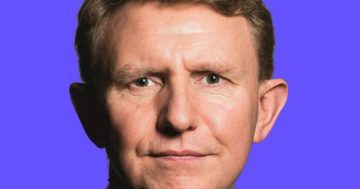Three large funs with three very different internal structures have demonstrated the diversity in approaches to managing investment teams as found by *Ben Hurley.
 Three large funds with three very different internal structures have demonstrated the diversity in approaches to managing investment teams, in a pane session at Conexus Financial’s most recent Fiduciary Investors Symposium, held in the Blue Mountains west of Sydney.
Three large funds with three very different internal structures have demonstrated the diversity in approaches to managing investment teams, in a pane session at Conexus Financial’s most recent Fiduciary Investors Symposium, held in the Blue Mountains west of Sydney.
In a panel discussion looking how funds are evolving their structures with the times, investment heads at Australia’s Future Fund, the Australian Retirement Trust, and New Zealand Super Fund discussed oversight, dynamic asset allocation, technological improvements and remote working, among other things.
Set up in 2006 with a belief in the endowment investment model pioneered by the late David Swensen in the United States, the Future Fund pursues diversified asset exposure and harvesting risk primarily through unlisted assets, said Craig Thorburn, Director of CIO office at the Future Fund.
The team began with three groups: private markets, public markets and an in-house strategy–or asset allocation–function; and then “morphed a bit” over the years.
Changes include shifting credit from the public sector team to the private sector team as the organisation’s credit investments became predominantly private.
The organisation is also seeking a deputy CIO of change and innovation. And the role that was formerly deputy CIO of public markets is now deputy CIO of portfolio construction, which combines public markets with in-house strategy.
The Future Fund also has a dynamic asset allocation function, and a new treasury management role which is the equivalent of a chief liquidity officer, Thorburn said.
Three in, two out
Post-pandemic, the Future Fund has settled on a “three days in, two days out” approach to mobile working, but senior executives are expected to be in the office more than that, he said.
While this approach made it harder to hire immediately after the pandemic, this is no longer the case.
“The sense we now have is that people are now working through how they can get people back into the office,” Thorburn said.
“Not five days a week, maybe not even three days, but at least there is a presence. And so we’re finding that that problem that we were having from recruitment isn’t as big a problem as it was a year ago.”
NZ Super Fund is “probably one of the world’s purest applications of the total portfolio approach or reference portfolio,” said Will Goodwin, the fund’s head of direct investments. The board sets a strategic asset allocation, and the management team transforms that into opportunities in areas ranging from infrastructure to sustainable transition.
“We try and find risk factors or elements that we want to get exposure to, and we then allocate our portfolio risk across those,” Goodwin said.
“And then through that, the team then decides how much risk through time we want to be allocating, and it’s very dynamic. So one month we say, we want more real estate, and in six months’ time we want less, and it’s a quite a hard discipline to be running when you’re moving your valuations very, very rapidly.
Minimal specialists
Goodwin said the fund had some specialists in areas like hedge funds, global macro and smart beta or factor strategies, but these were kept “at the absolute minimum level” so that when the fund dials up or down it levels the investments.
“We’re not having to reduce the size of the team,” Goodwin said.
“We did start with sector specialists,” he said.
“We found that very hard because as soon as you start defunding and you’ve got an infrastructure team who wants to go and buy infrastructure and you tell them: ‘Well sorry guys, you gotta go and sell it all now,’ that grates against the model around how we want to construct and operate the portfolio.”
Below the CEO and board, three individuals lead the investment group.
One CIO is responsible for managing most of the active risk of the portfolio as there is a general manager for portfolio completion, which includes passive and synthetic investments and a credit function.
And there is a general manager of risk, responsible for auditing and managing liquidity.
The investment committee is made up of staff who have equal votes for how the portfolio is run, giving “collective ownership and responsibility for the operation of the portfolio,” Goodwin said.
The fund is currently working to embed a data and analytics capability into its front office through individuals who do not deploy risk, but rather support the risk-taking functions of the teams. And it has an artificial intelligence unit deploying active risk investing through machine learning models.
The Australian Retirement Trust, which came about from the merger between Sunsuper and Q Super in February this year, has a relatively small investment team of 119 members in a big organisation, according to Elizabeth Kumaru, head of private corporate assets.
The CIO is responsible for delivering on objectives for members. A head of strategy sets asset allocations and overall strategy for the fund’s diversified options, and within this team sit specialists in public markets, alternatives and unlisted assets, along with a dynamic asset allocation team.
There is also a capital markets team that manages board mandates including exposure or liquidity management, in-house cash and fixed interest management.
The fund also has a head of sustainable investments, a public markets team, and a head of global real assets aimed at linking to inflation.
Kumaru, as head of private corporate assets, is responsible for private equity, private debt and other alternative asset classes.
The risk of becoming siloed
Distinct teams, and a desire to ensure deep specialist skills, comes with the risk of becoming too siloed, Kumaru said.
“So we’ve structured it such that we are aware of that potential risk and deliberately manage it through oversight discussion engagement,” she said.
“I think it’s important to note that we all report in to the deputy chief investment officer and that is a deliberate design and structure to ensure integration discussion continuity across those teams.”
An internal investment committee deals with big investment decisions and leverages the experience and diverse skillset across the whole group.
A new role, still vacant, is called ‘head of portfolio resilience and planning,’ and will provide support and oversight to the deputy CIO and CIO to help assess and manage internal teams. External management teams bring deep oversight to external managers, and this new role aims to provide greater oversight to internal teams, ensure short and long term resilience, and think through thematic threats.
ART does not mandate its teams be in the office, but without a mandate, her team is in the office about three days a week, she said.
*Ben Hurley who wrote this story is a journalist and editor with more than a decade of experience in the industry. He has written for The Australian Financial Review, Business Review Weekly, The Guardian and a range of specialised and industry publications.
This article first appeared in Investment Magazine.










